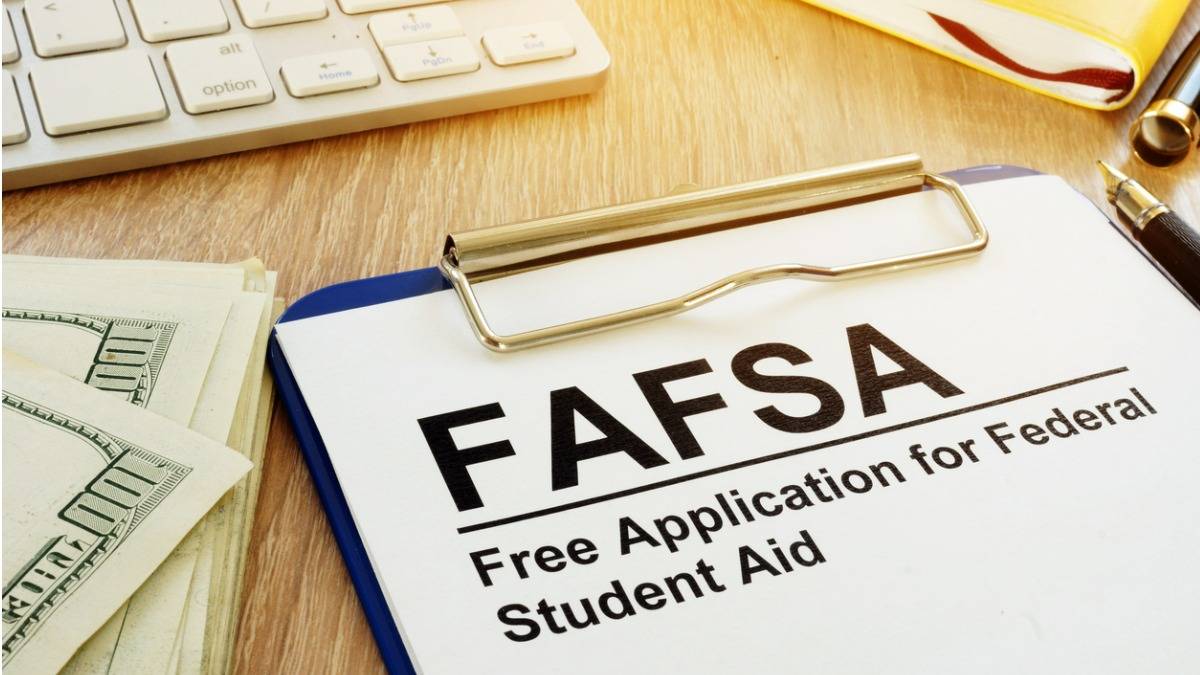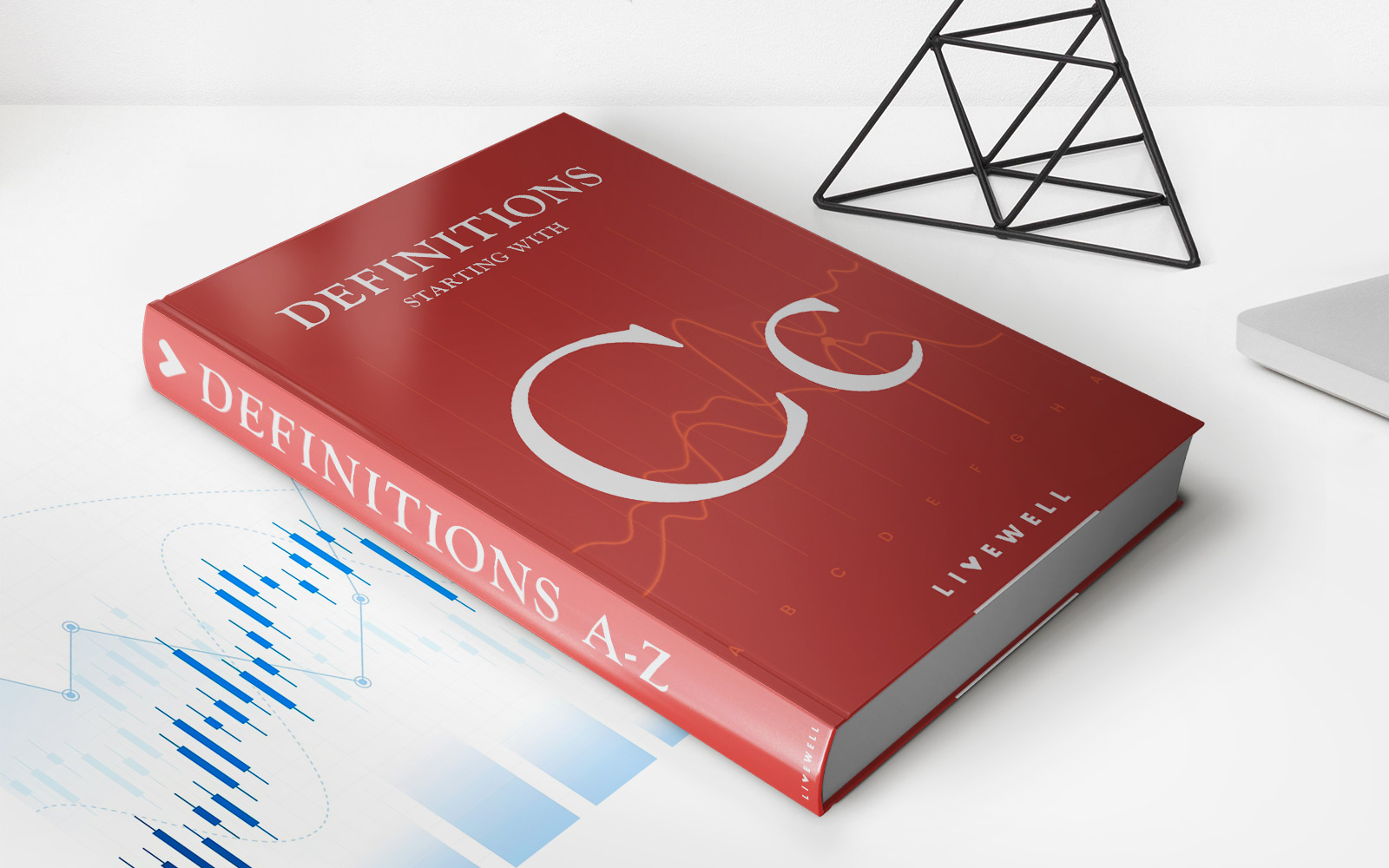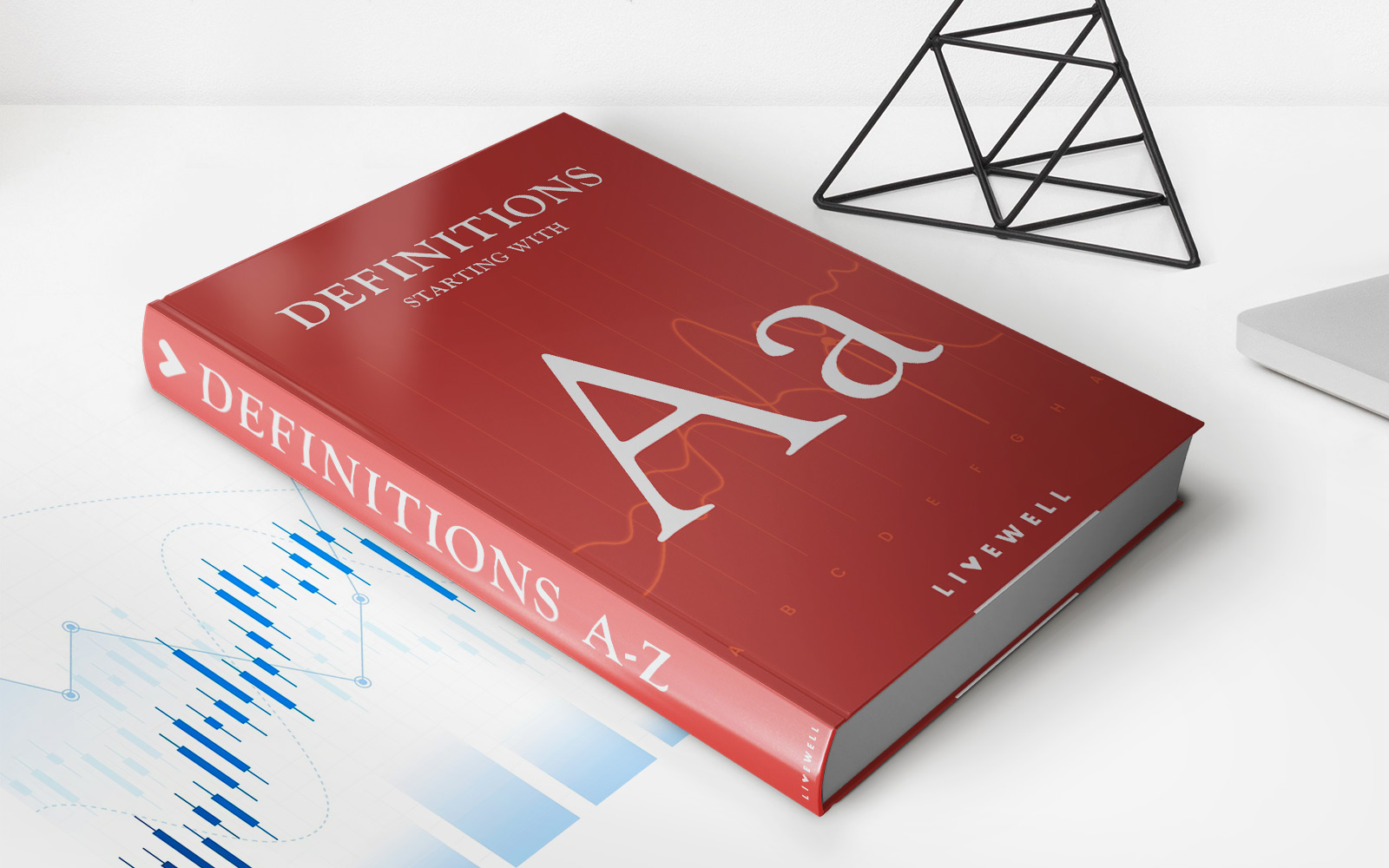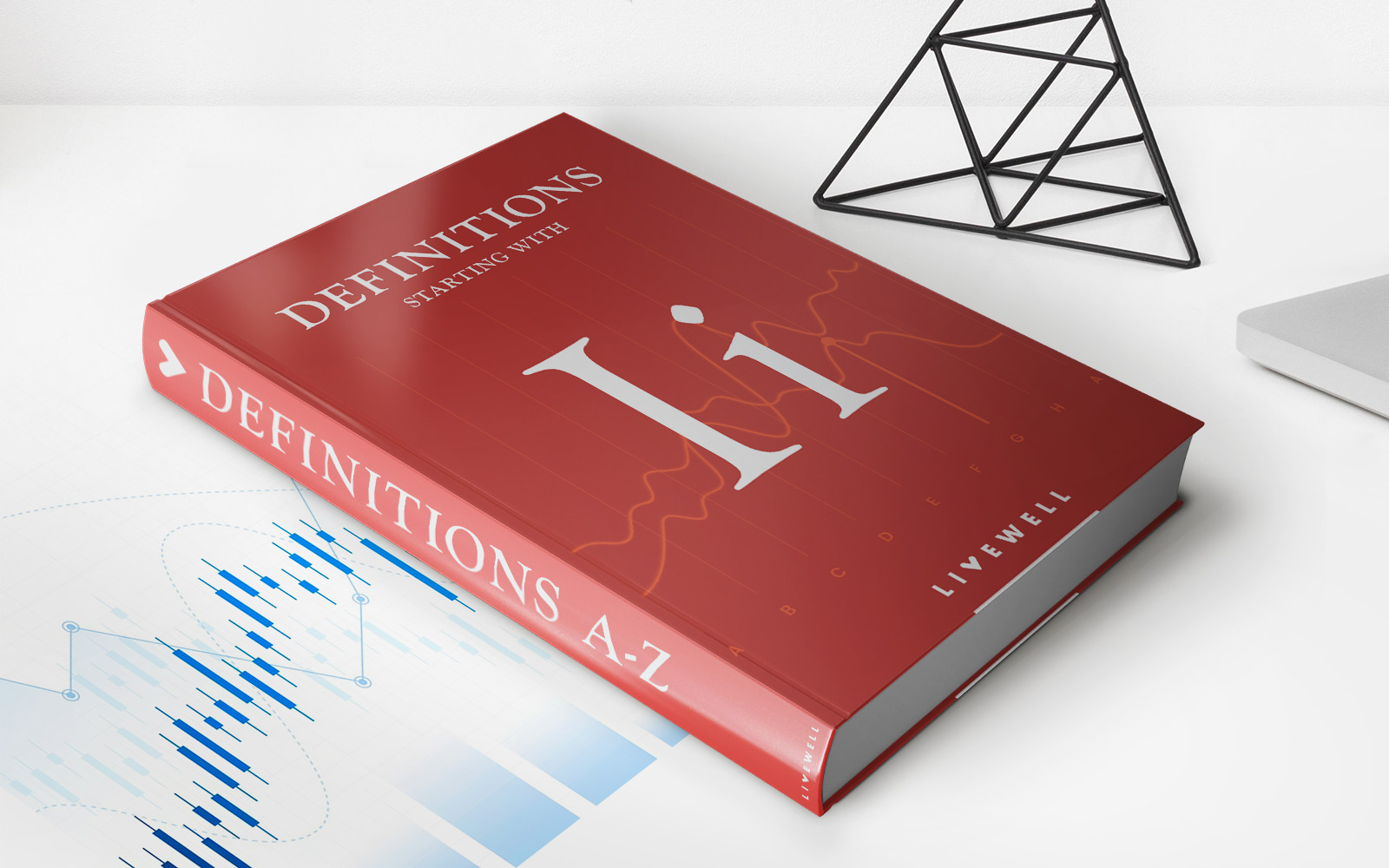Home>Finance>How To Get A Copy Of Student Loan Promissory Note


Finance
How To Get A Copy Of Student Loan Promissory Note
Published: October 22, 2023
Learn how to obtain a copy of your student loan promissory note and manage your finances effectively. Discover essential tips and resources to navigate the intricacies of loan documentation.
(Many of the links in this article redirect to a specific reviewed product. Your purchase of these products through affiliate links helps to generate commission for LiveWell, at no extra cost. Learn more)
Table of Contents
- Introduction
- Understanding the Student Loan Promissory Note
- Reasons for Obtaining a Copy of the Student Loan Promissory Note
- Methods to Request a Copy of the Promissory Note
- Requesting a Copy from the Original Lender
- Contacting the Department of Education for a Copy
- Contacting the Loan Servicer for a Copy
- Requesting a Copy through the National Student Loan Data System (NSLDS)
- Submitting a FOIA Request for a Copy of the Promissory Note
- Important Information to Include in the Request
- Additional Steps to Take if Unable to Obtain a Copy
- Conclusion
Introduction
Student loans have become a common tool for financing higher education. When you take out a student loan, you enter into a legal agreement with the lender, and this agreement is documented in a promissory note. Understanding the terms and conditions outlined in the promissory note is essential to managing your student loan repayment effectively. However, obtaining a copy of your student loan promissory note may not always be straightforward.
In this article, we will delve into the importance of obtaining a copy of your promissory note and explore the various methods you can use to request it. Whether you need it for reference, verification, or any other purpose, having a copy of your promissory note is crucial for staying informed about your student loan.
Keep in mind that the process of obtaining a copy of your promissory note may vary depending on the type of loan you have and the specific circumstances surrounding your loan. It’s essential to follow the correct channels to ensure a smooth and successful request.
So, let’s dive into the world of student loan promissory notes and discover how you can obtain a copy of yours.
Understanding the Student Loan Promissory Note
The student loan promissory note is a legal document that outlines the terms and conditions of your loan agreement. It serves as evidence of your commitment to repay the borrowed funds, along with the associated interest and fees. The promissory note provides important information such as the loan amount, interest rate, repayment plan, and any additional terms specific to your loan.
By familiarizing yourself with the content of the promissory note, you gain a clear understanding of your rights and responsibilities as a borrower. It allows you to plan your finances effectively and make informed decisions regarding your student loan repayment. It’s important to review the promissory note early in the process to avoid any potential surprises or misunderstandings down the road.
Furthermore, the promissory note serves as a legal protection for both the lender and the borrower. It establishes the terms of the loan agreement and clearly defines the obligations of each party. If any disputes or issues arise during the repayment period, the promissory note acts as a reference point to resolve them.
It’s crucial to note that there may be differences in promissory notes based on the type of student loan you have. For example, federal student loans have promissory notes specific to the various programs, such as Direct Subsidized Loans, Direct Unsubsidized Loans, or PLUS Loans. Private student loans, on the other hand, have their own unique promissory note agreements.
Now that we understand the significance of the promissory note, let’s explore the reasons why you may need a copy of this document.
Reasons for Obtaining a Copy of the Student Loan Promissory Note
Obtaining a copy of your student loan promissory note can be beneficial for several reasons. Let’s take a closer look at why it is important to have this document in your possession:
- Understanding Loan Terms: The promissory note contains crucial information about your loan, such as the interest rate, repayment terms, and any special conditions. Keeping a copy of the promissory note allows you to refer back to these terms whenever needed, ensuring that you fully understand your obligations as a borrower.
- Verification Purposes: If you need to verify your loan details for any reason, having a copy of the promissory note provides concrete evidence of the agreement between you and the lender. This can be especially helpful when applying for loan forgiveness, reporting income for tax purposes, or resolving any discrepancies.
- Reference for Repayment Options: Different types of loans have varying repayment plans and options. By having a copy of the promissory note, you can review and understand the specific repayment options available to you. This can help you make informed decisions regarding loan consolidation, deferment, forbearance, or other repayment strategies.
- Disputes and Legal Protection: In the unfortunate event of a dispute or disagreement with the lender, the promissory note acts as a legal document that outlines the terms both parties agreed upon. By having a copy, you can refer back to the agreed-upon terms and protect your rights as a borrower.
- Overall Financial Organization: Keeping a copy of your promissory note with your financial records ensures that you have all the necessary documentation in one place. This helps you maintain a clear and organized overview of your student loan obligations, making it easier to track your progress, stay on top of payments, and manage your finances effectively.
Now that you understand the importance of obtaining a copy of your promissory note, let’s explore the various methods you can use to request it.
Methods to Request a Copy of the Promissory Note
If you need a copy of your student loan promissory note, there are several methods you can use to make the request. The specific method you should utilize depends on the type of loan you have and the entity responsible for servicing your loan. Let’s explore the most common methods:
- Requesting a Copy from the Original Lender: If you have a federal loan, such as a Direct Loan, your promissory note is typically held by the Department of Education or the loan servicer assigned to your account. Contacting the original lender or loan servicer and requesting a copy of the promissory note is a logical first step. Provide them with your personal information and loan details to expedite the process.
- Contacting the Department of Education for a Copy: If you are unsure about the current lender or loan servicer, or if your loan is held by the Department of Education, you can contact them directly to request a copy of your promissory note. Provide them with your full name, Social Security number, and any other identifying information they may require to locate your loan and provide the necessary documents.
- Contacting the Loan Servicer for a Copy: If you are aware of the loan servicer responsible for managing your student loan, reach out to them directly to request a copy of your promissory note. Provide them with your personal information, loan account number, and any other relevant details to facilitate the request.
- Requesting a Copy through the National Student Loan Data System (NSLDS): The NSLDS is a database that stores information regarding federal student loans. You can access your loan information and potentially request a copy of your promissory note through their website. However, it’s important to note that not all borrowers will have access to this option, as it primarily caters to borrowers with federal student loans.
- Submitting a FOIA Request for a Copy of the Promissory Note: In rare cases, if your loan is held by a private lender or if the previous methods are unsuccessful, you may need to submit a Freedom of Information Act (FOIA) request. This is a legal process through which you can request access to government documents, which may include your promissory note if your loan is federally held.
When making a request for a copy of your promissory note, it’s important to be clear and concise in your communication. Include all relevant personal and loan information to facilitate the process. Additionally, be prepared for potential delays or additional steps, as the process may vary depending on the specific circumstances surrounding your loan.
If, despite your efforts, you are unable to obtain a copy of your promissory note through these methods, there are alternative steps you can take, which we will discuss in the next section.
Requesting a Copy from the Original Lender
If you have a federal student loan, such as a Direct Loan, requesting a copy of your promissory note from the original lender or loan servicer is a common and straightforward method. Here’s how you can go about it:
- Gather Your Loan Information: Before reaching out to the lender or loan servicer, gather all relevant information related to your loan. This includes your full name, Social Security number, loan account number, and any other identifying details that they may require to locate your loan.
- Contact the Original Lender or Loan Servicer: Reach out to the lender or loan servicer responsible for your student loan. This could be the Department of Education or a private loan servicer. Contact them through their designated customer service channels, which are typically a phone number, email address, or online portal.
- Submit a Formal Request: Clearly state your request for a copy of your promissory note. Provide the necessary loan and personal information to expedite the process. You may need to complete a specific form or follow a designated procedure outlined by the lender or loan servicer.
- Follow Up: After submitting your request, follow up with the lender or loan servicer to ensure it is being processed. Maintain open communication and be prepared to provide any additional documents or information they may request to fulfill your request.
- Document the Process: Keep a record of your interactions, including the date and time of your request, the name of the representative you spoke with, and any other relevant details. This documentation can be useful if any issues or disputes arise in the future.
Remember, the process for requesting a copy of your promissory note may vary slightly depending on the lender or loan servicer. It’s essential to stay patient, as it may take some time for them to locate and provide the necessary documents.
If your promissory note is not held by the original lender or loan servicer, there are alternative methods you can explore, such as contacting the Department of Education or submitting a FOIA request. We will discuss these options in the subsequent sections.
Contacting the Department of Education for a Copy
If you have federal student loans and are unsure about the current lender or loan servicer, or if your loan is held by the Department of Education, contacting the Department directly is a viable option for obtaining a copy of your promissory note. Here’s what you need to do:
- Gather Your Personal Information: Before reaching out to the Department of Education, collect all the necessary personal information. This includes your full name, Social Security number, date of birth, and any other identification details they may require to locate your loan account.
- Find the Correct Contact Information: Visit the official website of the Department of Education and locate their contact information. Look for a designated phone number or an email address specific to student loan borrowers.
- Reach Out to the Department: Contact the Department of Education through the provided communication channels and request a copy of your promissory note. Clearly state your need for the document and provide all the requested personal information to facilitate the process.
- Follow Any Additional Instructions: The Department of Education may have specific procedures or forms to complete in order to obtain your promissory note. Follow any additional instructions they provide and submit the required documents promptly.
- Keep Track of Your Request: Maintain a record of your communication with the Department of Education, including the date and time of your request, and any reference numbers or names of the representatives you spoke with. This documentation will be helpful in case there are any discrepancies or delays in receiving your promissory note.
Be aware that the processing time for your request may vary, so it’s important to remain patient during the process. Follow up with the Department of Education regularly to ensure that your request is being handled and that you receive your promissory note in a timely manner.
If this method is not applicable to your situation or is unsuccessful, you can explore other ways to obtain a copy of your promissory note, such as contacting the loan servicer or submitting a FOIA request. We will discuss these methods in subsequent sections.
Contacting the Loan Servicer for a Copy
If you have a federal or private student loan and are aware of the loan servicer responsible for managing your loan, contacting them directly is a viable method for requesting a copy of your promissory note. Here’s how you can go about it:
- Gather Your Loan Information: Before reaching out to the loan servicer, gather all relevant information related to your loan. This includes your full name, Social Security number, loan account number, and any other identifying details that they may require to locate your loan.
- Find the Contact Information: Locate the contact information for your loan servicer. This information can typically be found on your loan statement, the loan servicer’s website, or through a search on the National Student Loan Data System (NSLDS). The loan servicer’s website may provide a customer service phone number, email address, or online portal for communication.
- Get in Touch with the Loan Servicer: Contact the loan servicer through the provided communication channels and request a copy of your promissory note. Clearly explain the purpose of your request and provide all necessary personal and loan information to facilitate the process.
- Follow Any Additional Instructions: The loan servicer may have specific procedures or forms to complete for obtaining your promissory note. Be sure to understand and follow any additional instructions they provide. Provide any required documentation promptly to expedite the process.
- Track Your Request: Keep a record of your communication with the loan servicer, including the date and time of your request, any reference numbers provided, and the names of the representatives you speak with. This documentation will be useful if there are any issues or delays in receiving your promissory note.
Remember that loan servicers handle a large volume of loans, so it’s important to remain patient throughout the process. Follow up with the loan servicer periodically to ensure that your request is being processed and that you receive your promissory note in a timely manner.
If you are unable to contact the loan servicer, or if they are unable to provide a copy of your promissory note, there are alternative methods you can explore, such as requesting the note from the original lender or submitting a FOIA request. We will discuss these options in the following sections.
Requesting a Copy through the National Student Loan Data System (NSLDS)
If you have federal student loans, you may be able to request a copy of your promissory note through the National Student Loan Data System (NSLDS). While not all borrowers will have access to this option, it is worth exploring if you are eligible. Here’s how you can request a copy through the NSLDS:
- Visit the NSLDS Website: Go to the official NSLDS website at nslds.ed.gov.
- Access Your Loan Information: Log in to the NSLDS website using your Federal Student Aid (FSA) ID. If you don’t have an FSA ID, you can create one on the same website.
- Verify Your Identity: Follow the prompts to verify your identity by providing the required personal information. This may include your Social Security number, date of birth, and other details specific to your borrower profile.
- Review Loan Details: Once logged in, you can access your loan information, including the details of your promissory note. Look for an option to view or download a copy of your promissory note. If available, follow the instructions provided to obtain a copy.
- Follow Any Additional Steps: The process may vary for each borrower, depending on their specific loan details and access permissions within the NSLDS. Follow any additional steps or procedures outlined on the website to ensure a successful request.
- Keep a Record of Your Request: Document the process by keeping a record of the steps you took, including the date and time of the request. This documentation will be helpful if you encounter any issues or need to reference the process in the future.
It’s important to note that not all borrowers will have access to their promissory note through the NSLDS. The availability of this option depends on the loan type, the information provided, and the access permissions granted to individual borrowers.
If you are unable to request a copy of your promissory note through the NSLDS, there are alternative methods to explore, such as contacting the loan servicer, the Department of Education, or submitting a Freedom of Information Act (FOIA) request. We will discuss these options in the following sections.
Submitting a FOIA Request for a Copy of the Promissory Note
In cases where your student loan is held by a private lender or if other methods have been unsuccessful, you may need to submit a Freedom of Information Act (FOIA) request to obtain a copy of your promissory note. The FOIA allows individuals to request access to government records, and in this case, it can be utilized to request access to your promissory note if your loan is federally held.
- Gather Required Information: Before submitting a FOIA request, gather all the necessary information related to your loan, including your full name, Social Security number, loan account number, and any other identifying details that may be required.
- Locate the Correct Agency: Determine the appropriate agency responsible for handling FOIA requests related to student loans. This is typically the Department of Education, but it may vary depending on the specifics of your loan. Check the official government websites or contact the agency directly to confirm the correct entity.
- Prepare the FOIA Request: Write a formal FOIA request letter. Clearly state your intention to obtain a copy of your promissory note and provide all the necessary loan and personal information. Be specific and concise in your request to facilitate the process.
- Submit the FOIA Request: Send your FOIA request to the designated agency via email or mail, following their specified guidelines. Be sure to keep a copy of the request for your records.
- Be Patient and Follow Up: Understand that the FOIA request process may take time. Agencies are typically required to respond within a specific timeframe, but it might take several weeks or months to obtain a response. Follow up with the agency periodically to check the status of your request.
- Review the Response: Once you receive a response to your FOIA request, review the materials provided. If your promissory note is included, make a copy for your records and verify that it contains the relevant information you need.
Submitting a FOIA request can be a more time-consuming and complex process compared to other methods. It’s generally considered a last resort when other efforts to obtain your promissory note have been exhausted. However, it may be necessary if your loan is held by a private lender or if previous methods have been unsuccessful.
Remember to maintain proper documentation throughout the FOIA request process, including a copy of your request and any correspondence with the agency. This documentation will be invaluable should any issues or disputes arise in the future.
Important Information to Include in the Request
When requesting a copy of your promissory note, it is important to include specific and accurate information in your request to facilitate the process and ensure a successful outcome. Here are the key details you should include:
- Your Full Name: Provide your full legal name as it appears on your loan documents. This will help the lender, loan servicer, or government agency identify your loan account.
- Social Security Number (SSN): Include your SSN to further verify your identity and assist in locating your loan account. Make sure to provide the correct SSN to avoid any delays or confusion.
- Loan Account Number: Include your loan account number, if available. This is a unique identifier assigned to your loan account, and it helps the lender or loan servicer locate your specific loan in their systems.
- Date and Signature: Enter the date of your request, and if applicable, sign the request form or letter. The date and signature authenticate your request and make it legally valid.
- Loan Details: Provide as much information about your student loan as possible. This may include the type of loan (e.g., federal or private), the loan program (e.g., Direct Loan or Perkins Loan), the loan amount, and the disbursement dates.
- Reason for the Request: Clearly state the reason you are requesting a copy of your promissory note, such as verification purposes, understanding loan terms, or resolving a dispute. Including the reason for your request allows the lender or loan servicer to better understand and process your request.
- Contact Information: Provide accurate contact information for yourself, including your current address, phone number, and email address. This ensures that the lender or loan servicer can reach you if there are any questions or updates regarding your request.
By including all the necessary information in your request, you increase the chances of a smooth and efficient process. Double-check your request before submitting to ensure accuracy, as any missing or incorrect information may cause delays in obtaining your promissory note. If you’re unsure about any specific details, reach out to the lender, loan servicer, or relevant agency for guidance.
Additional Steps to Take if Unable to Obtain a Copy
If you have made various attempts but are still unable to obtain a copy of your promissory note through the previous methods, don’t be discouraged. There are additional steps you can take to address this situation. Here are some options to consider:
- Reach Out to a Higher Authority: If you have exhausted all available channels, consider reaching out to a higher authority within the organization or institution that holds your loan. This could involve escalating your request to a supervisor or manager who may have more authority to assist you.
- Seek Help from a Student Loan Ombudsman: Student loan ombudsmen are mediators who can help resolve disputes between borrowers and lenders. Contact a student loan ombudsman office to explain your situation and seek their guidance and assistance. They can provide advice on next steps or help facilitate communication with the lender or loan servicer.
- Consult with a Student Loan Attorney: If all else fails, it may be beneficial to seek legal advice from a student loan attorney. They specialize in student loan issues and can provide guidance on how to proceed. An attorney can assist you in exploring legal options or pursuing further action to obtain access to your promissory note.
- Document All Communication: Throughout the process, maintain thorough records of all communication with the lender, loan servicer, or relevant parties. Keep copies of emails, letters, and any other documentation exchanged. This documentation will be helpful if you need to escalate the issue or involve legal assistance.
- Explore Alternative Resources: Consider utilizing other resources, such as student loan advocacy groups or online forums, where individuals facing similar challenges may share insights and strategies. They may have encountered similar situations and can provide advice or suggestions based on their experiences.
Remember, each situation is unique, and the steps to take if unable to obtain a copy of your promissory note may vary depending on the specific circumstances of your loan. It’s important to remain persistent and explore all available avenues to resolve the issue. Seeking professional assistance, such as a student loan ombudsman or attorney, can provide you with expert guidance tailored to your situation.
Always stay proactive in resolving the issue, as having a copy of your promissory note is crucial for managing your student loan effectively and understanding your rights and responsibilities as a borrower.
Conclusion
Obtaining a copy of your student loan promissory note is essential for understanding your loan terms, verifying your obligations, and making informed decisions regarding your loan repayment. While the process may vary depending on the type of loan and the specific circumstances, there are several methods you can use to request a copy of your promissory note.
Start by contacting the original lender or loan servicer associated with your loan. Provide them with the necessary personal and loan information to facilitate the request. If that doesn’t yield results, you can reach out to the Department of Education or the loan servicer directly. Utilizing the National Student Loan Data System (NSLDS) may also be an option if you have federal loans. In more challenging cases, submitting a Freedom of Information Act (FOIA) request might be necessary.
If you’re still unable to obtain a copy of your promissory note, consider reaching out to higher authorities within the institution, seeking assistance from a student loan ombudsman, or consulting with a student loan attorney. Document all communication throughout the process and explore alternative resources for guidance.
While the journey to obtain a copy of your promissory note may present challenges, it is important to remain persistent and proactive. This document holds vital information about your loan, and having it on hand will equip you with the knowledge necessary to navigate your student loan repayment journey successfully.
Remember, staying informed about your loan terms and understanding your rights and responsibilities as a borrower are crucial steps toward achieving financial stability. By obtaining a copy of your promissory note, you are taking control of your financial future and setting yourself up for a successful student loan repayment experience.














